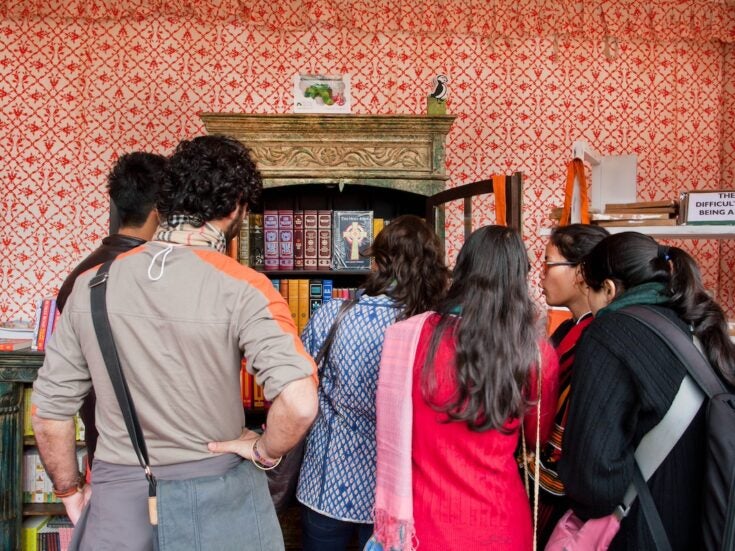Josh Spero explores a gleaming gallery where Old Masters share wall space with much newer fare
Within the art world, there are two currents which flow in opposite directions. Galleries selling Contemporary works are rushing forward, buying and building ever-bigger spaces as fashion favours them; a Mayfair townhouse tricked up in marble and white has become standard. Galleries selling earlier art, whether Old Masters or low-key Modernists, are in retreat, abandoning street-level showrooms for first-floor burrows as collectors’ tastes forsake the past for now. Philip Mould, unsurprisingly, cuts across the currents.
True, he has given up his Dover Street space, victim of encroaching fashion houses, but only for the gleam of his new Pall Mall galleries, with double the space for his Old Masters and Modern British pictures. These rooms, with their silvery wood floors and hessian wallpapers in 18th century hues chosen by Ed Bulmer, stretch across three levels and are, says Philip, ‘the gallery of my dreams’.

Philip, known to many as one half of BBC One’s Fake or Fortune? presenting team, has applied in the new gallery lessons about how to show Old Masters learnt over decades in the trade – ‘how to fuse them with a modernistic approach without being tawdry’. Instead of gratuitous damask hangings in jewel colours, the hessians – not drab but not showy – let the art lift itself. Higher ceilings allow large works to loom.
There is a screen by the reception desk showing videos which shed light on artworks, and paintings before and after restoration. Indeed, propped against a wall when I visited was a portrait by Enri Gascars of Charles II’s mistress Louise de K’rouaille, duchess of Portsmouth, known as Fubbs for her generous proportions. (‘Fubsy’ meant chubby.) A peach streak runs down her sallow breast, showing what a cleaning will do for a work.

Louise de K’rouaille, before cleaning
Picking up on a buyers’ quirk, Philip has made the narrow storage racks of paintings – normally out of sight – easily available; patrons like the feeling – the illusion? – of discovering works for themselves.
Given the tide of the market, with demand for Old Masters diminishing, is he worried that in twenty years’ time no one will be buying the sort of paintings he sells? The problem, he says, is ‘fashion’: ‘For every one person who buys an Old Master, you can find nine who prefer a Contemporary or 20th century work.’

Complementarily, perhaps somewhat mischievously, he predicts a turn in fashion and the rise of currently d’class’ artworks – early 20th century British paintings (which he is also selling); cut glass; and brown furniture. (He says a friend of his has been filling two warehouses with brown furniture in anticipation of a change of taste.)
Collectors, academics and the broader market need to relent from their ‘savage’ assault on ‘the 18th century sensibility’, though, before this can happen. If anything’s going to persuade them to give Old Masters a chance, it will be the glorious setting Philip Mould has contrived for them.
’
Philip Mould & Company, 17-18 Pall Mall
Fake or Fortune? returns at 8pm on 5 July on BBC One







